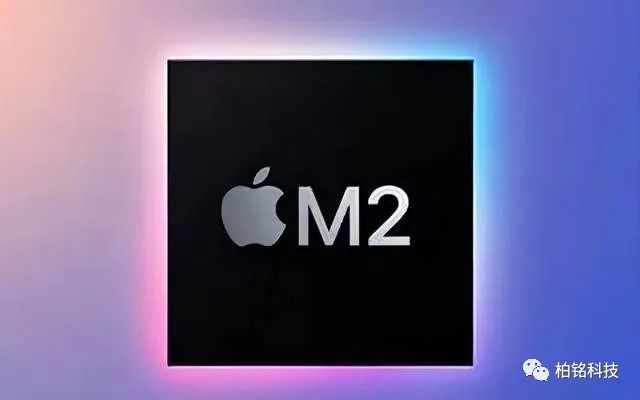In Node.js, what you need to use this buffer.from to encode a string right into a buffer, and then use buf.toString to do the reverse transformation. They perform that conversion also between strings and Uint8Arrays. Node 12 have these as global, for Node 10 you have to require them manually from the module. That's very much pushing people in direction of using UTF-8 everywhere, which is usually a great factor. Base64 doesn't conceal data, it solely transforms it from one format to another for easier transfer between totally different techniques. The Base64 encoded string should be treated as plain text; it doesn't defend knowledge from the man within the center attacks. In this submit we discovered to encode and decode strings utilizing Base64 in JavaScript. One factor that I used a lot throughout this speak is the Unicode command. You may give it a string and it'll tell you the Unicode code factors, how it looks like if you encode it in some ways utilizing UTF-8 or UTF-16, what classes it's in, all that stuff. You can get all the cat faces by grabbing for it basically, utilizing the cat face facial features.
It's a super helpful software for when you're dealing with Unicode characters normally. There's additionally iconv, it is a character encoding conversion software. This will not work as a result of my terminal is configured to make use of UTF-8 as all people's terminal should be. There are also Node bindings for it if you actually need to deal with grit character encodings. I even have a listing of MDN pages which are fairly helpful, however you'd be able to Google them yourselves if you need to study something. I definitely picked up lots of things that should be defined a lot higher. For the character encodings that Node.js itself helps, one there's ASCII, and I really don't know why we do this. It basically does the same factor as encoding using Latin-1, however with some further steps. Definitely, in Node.js we regret that we're stuck with for the the rest of eternity. Because most of modern processors are little endian based, in order that's a bit easier to use there. Also, because V8 already offers us a way to cope with UTF-16 and UTF-8. We don't need to do the encoding or decoding mechanisms ourselves in the Node.js core.
There is an alias for UTF-16, which is called UCS-2. Node.js does help big endian machines but on those it actually does manually reverse the byte order when it encodes or decodes utilizing UTF-16. Node.js also has support for encoding that you can parse with that is called binary. I'm going to tell you why you must never use it. In the early days of JavaScript, we did not have Uint8Array. We didn't essentially have Node.js buffers in a browser surroundings, and we nonetheless wished to work with binary knowledge in some way. There are two approaches you could take with that. Either you're going to be like, I'm simply going to use arrays of numbers between 0 and 255, and that's my binary knowledge type in that case, or you had been utilizing strings. Uint8Array or buffers, those are the solutions that we now have for this downside. The btoa() perform returns a Base64 encoded ASCII string from a string of binary data, the place each character represents an 8-bit byte. In contrast, the atob() perform decodes a string that has been encoded using the Base64 format and returns it. The first trace that I can provide you is that, if you concatenate the string and object and the buffer or Uint8Array as an object, that it will name toString on that object. In this case, it all the time calls it on the buffer, so we name .toString on every particular person buffer right here. What can occur is we don't control the dimensions or the boundaries of the buffer chunks that we read from normal input. For instance, when the input is Mull, what can occur within the worst case, is that it gets split proper in the course of the U character. For instance, we might read it from the operating system, first 2 bytes then three bytes. When we name toString on these individually, it will not work as a end result of each of these incorporates components of a valid character but not an entire one.
We will find yourself with M replacement, replacement ll, which is what occurs here. What Travis CI actually does internally, in all probability, is it reads information from the terminal that it created, and it converts it to a string. Because these chunks are normally rather large, I would guess a pair kilobytes, no less than. It would not occur for each single character within the output. It doesn't occur when you happen to not hit the character boundary. Then there's UTF-16, which is 2-byte code units, so sixty five,000 characters that might be encoded in a single 2-byte unit. Ones that don't fit into that range, they're split into two separate pairs of code models. Because it uses 2 bytes, there are two totally different variants. There's typically, little endian machines and large endian machines. The little endian ones put the low byte first and then the upper worth byte, massive endian is the reverse situation.
That's for instance why Node.js solely supports that variant. The simplest version that you are able to do that is ASCII. At least, traditionally, it is an important one of many first character encodings that got here into existence. Not all of those are printable characters that you could see on paper, and we assign every of the numbers. These are the decimal and hexadecimal values that we give them. We say each of those values will simply be encoded as a single byte within the final output. It does not actually matter as a result of the precise values do not matter. It covers most use cases that seem in the English languages and languages that use a similar alphabet, which aren't all that many. There's not lots else that you are able to do with it, which is frustrating if you do want to assist other languages. There are different character encodings that historically were concurring with ASCII. For instance, there's EBCDIC, which is basically solely used on IBM mainframes nowadays. I was pondering for April Fool's this year, I may wish to open a PR in opposition to Node that has support for that character encoding, as a end result of, once more, only supports IBM mainframes. For code operating using Node.js APIs, changing between base64-encoded strings and binary data must be carried out using Buffer.from(str, 'base64') andbuf.toString('base64').
Regular expressions, as well as strings, work when it comes to code models. Similar to beforehand described eventualities, this creates difficulties when processing surrogate pairs and combining character sequences using common expressions. Astral symbols and mixing character sequences require 2 or more code units to be encoded however are treated as a single grapheme. If a string has surrogate pairs or combining marks, you could be confused when evaluating string size or accessing a character by index with out keeping this concept in mind. That's not good, for example, as a end result of if you need to hash knowledge, or hash a string, you would normally want to hash its complete contents and make sure that it is unique. If you've strings, the place two strings are mapped to the same bytes before they are encoded, then you're going to get two strings that map to the identical hash when you use the binary encoding. I do not know what quantity of of you utilize Python lots in your day by day lives. This is amongst the issues that Python 2 did not really get right and that everyone tried to fix with Python 3. The authentic Python 2, its green square, equivalent to those binary strings, and that actually didn't work out the method in which that anyone wished it to. I assume the only use case that at present still stays for these is the atob and btoa methods in browsers that do Base64 conversion, because they do work with binary strings. You can mainly consider them legacy APIs at this point. Base-64 is a common encoding format used to symbolize a binary string as characters. This format is convenient for sending binary knowledge over the wire. Because the bottom ASCII characters are extensively supported, you could be reasonable sure that your base-64 encoded string will attain its vacation spot as meant. In the tip, all people makes use of UTF-8 now anyway, but there are nonetheless some points you could run into even when you don't worry about this all an excessive amount of. Sometimes, clearly, legacy code and legacy website exists. Sometimes people don't know that they do not use UTF-8.
This is typically misuse of the binary encoding, or typically they don't think about it. Sometimes they just notice that buffer.toString offers them a string, they usually don't care that it's encoded utilizing UTF-8. The Node.js file system API supports buffers for the pathnames, which may be attention-grabbing because you would normally anticipate that for a pathname, you parse in a string. This has actually been added because our company had a shopper that did combine a quantity of encodings in its directory pathnames. You would have a listing whose name was encoded using one encoding, and one other listing inside that that was encoded using a unique encoding. That was really motivated by a real use case, that you could figure out how to encode the trail into bytes, and then submit that buffer to the Node file system API. We have Latin-1 which is equivalent to binary, which you should by no means use. We have Base64 and hex, and this could be a bit complicated because these usually are not like the others. For character encoding, the general thing you wish to do is you wish to encode textual content as bytes. String to bytes is encoding and the reverse is decoding. Those are binary to text encodings, which signifies that string to bytes is actually decoding and the reverse is encoding. It could be a bit confusing as a result of it implies that buffer.from and buffer.toString, they can either encode or decode each or one of them depending on what encoding parameter you utilize. Node.js provides the Buffer object and a base64 encoder and decoder for this task. Writes string to buf at offset according to the character encoding inencoding. The size parameter is the number of bytes to write. If buf did not comprise sufficient area to suit the whole string, solely a part of string shall be written. However, partially encoded characters will not be written.
Base64 Encoding is used encode binary information to have the ability to prevent it from being modified throughout transit. PHP's base64_encode() perform can be utilized to encode any sequence of bytes to Base64 encoded string. As talked about above , JavaScript strings are internally encoded in UTF-16 code items, and other character encodings cannot be handled properly. Therefore, to transform to a character encoding properly represented in JavaScript, specify UNICODE. In the above script we create a new buffer object and pass it our string that we want to convert to Base64. We then call "toString" technique on the buffer object that we simply created and handed it "base64" as a parameter. The "toString" method with "base64" as parameter will return information within the form of Base64 string. Run the above code, you shall see the following output. In the tip, Node.js interacts with the working system purely based on bytes too, there's no method to parse in strings or anything that conceptually consists of characters. When it talks to the working system, that is always in bytes, whether or not that is for file paths, or for writing knowledge to a community socket or one thing. Also, I do not know what number of of you use the native C or C++ Windows APIs, they are huge followers of UTF-16. They made the mistaken bet on that earlier than UTF-8 was actually in style I suppose. Most Windows methods assist one ASCII mode, and one UTF-16 mode. Even if you use UTF-8, things can nonetheless go wrong.
Even the QCon web site didn't accept the discuss title at first. I needed to manually edit the replacement character in the center. It will deal with circumstances just like the one the place partial characters may be read. The most typical character encoding that's used with Unicode is UTF-8. The larger the character quantity is, the longer the byte sequence is by which it is encoded. The ASCII characters in UTF-8 are the ASCII characters as they are in code of ASCII, which is very nice. These explicit byte sequences don't actually have to worry about how the precise bits are encoded. If there's something broken, some invalid byte in there whenever you decode it, that will not break decoding of the the rest of the string. The method that Unicode characters are usually spelled out is U+ and then four hex digits, or 5 typically if the characters don't fit into the 4 hex digit vary. That is how you specify, that is the character I'm talking about, does not specify how it's encoded. The first 256 Unicode characters are the 256 Latin-1 characters. The most number that one can have is larger than 1 million, so we'll have somewhat greater than 1 million characters in complete available for Unicode. Hopefully, that is enough for the lengthy run, we'll see. It also consists of emoji, which is one thing that the Unicode commonplace is known for today. Every new revision of the Unicode commonplace comes with new emoji. It has its personal alternative character, which is something that earlier characters encodings did not essentially characteristic. There's a particular character that can be utilized when one thing can't be decoded successfully.
This is also the character encoding that we discuss when we use character escapes in HTML or in JavaScript. You will need to use a different function, or write your individual, if your string isn't already correctly encoded. Before Node.js 8.0.0, the a hundred byte buffer would possibly comprise arbitrary pre-existing in-memory data, so may be used to reveal in-memory secrets and techniques to a distant attacker. Since Node.js 8.0.zero, publicity of memory can't occur as a outcome of the info is zero-filled. However, other attacks are nonetheless attainable, similar to inflicting very massive buffers to be allotted by the server, leading to efficiency degradation or crashing on reminiscence exhaustion. For 'base64', 'base64url', and 'hex', this perform assumes legitimate enter. For strings that comprise non-base64/hex-encoded knowledge (e.g. whitespace), the return value could be greater than the size of a Buffer created from the string. String sources are encoded as UTF-8 byte sequences and copied into the Blob. Unmatched surrogate pairs inside each string part might be replaced by Unicode U+FFFD replacement characters. Base64 is often used to encode data that may be corrupted during switch.









No comments:
Post a Comment
Note: Only a member of this blog may post a comment.